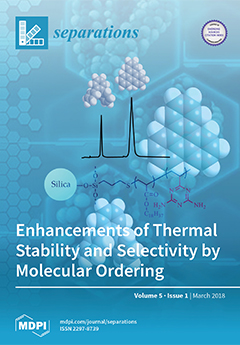The baker’s yeast
Saccharomyces cerevisiae harbors multiple prions that allow for the creation of heterogeneity within otherwise clonal cell populations. However, in many cases, the consequences of prion infection are entirely unclear. Predictions of prion-induced changes in cell physiology are complicated by pleotropic
[...] Read more.
The baker’s yeast
Saccharomyces cerevisiae harbors multiple prions that allow for the creation of heterogeneity within otherwise clonal cell populations. However, in many cases, the consequences of prion infection are entirely unclear. Predictions of prion-induced changes in cell physiology are complicated by pleotropic effects, and detection is often limited to relatively insensitive cell growth assays that may obscure many physiological changes. We previously showed that silica gel high performance thin-layer chromatography-densitometry (HPTLC) can be used to empirically determine prion-induced changes in lipid content in yeast. Here, we conduct pair-wise quantifications of the relative levels of free sterols, free fatty acids, and triacylglycerols [petroleum ether-diethyl ether-glacial acetic acid (80:20:1,
v/
v/
v) mobile phase and phosphomolybdic acid (PMA) detection reagent]; steryl esters, methyl esters, and squalene [hexane-petroleum ether-diethyl ether-glacial acetic acid (50:20:5:1,
v/
v/
v/
v) and PMA]; and phosphatidylethanolamine, phosphatidylcholine, and phosphatidylinositol (chloroform-diethyl ether-acetic acid (65:25:4.5,
v/
v/
v) and cupric sulfate-phosphoric acid) in otherwise clonal prion-infected ([
RNQ+]) and prion-free ([
rnq−]) cells in both stationary- and logarithmic-growth phases. We detected multiple statistically significant differences between prion-infected and prion-free cells that varied by growth phase, confirming our pr evious observations that prions exert distinct influences on cell physiology between stationary- and log-phase growth. We also found significant differences between cells expressing or lacking the Rnq1 protein which forms the [
RNQ+] prion, providing new clues to the as yet unresolved normal biological function of this prion-forming protein. This investigation further emphasizes the utility of HPTLC-densitometry to empirically determine the effects of prions and other presumed innocuous gene deletions on lipid content in yeast, and we expect that additional analyses will continue to resolve the physiological effects of prion infection.
Full article





